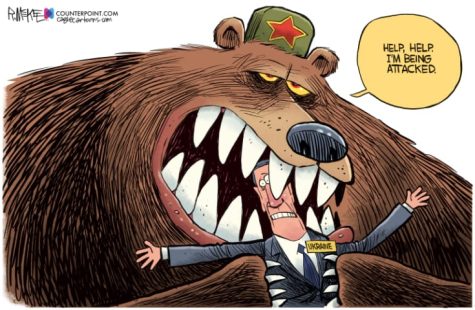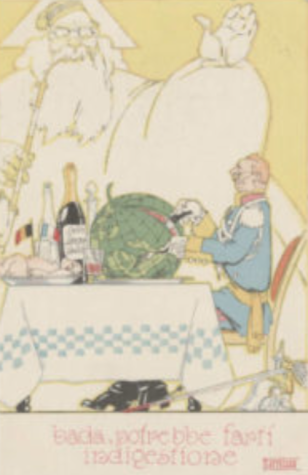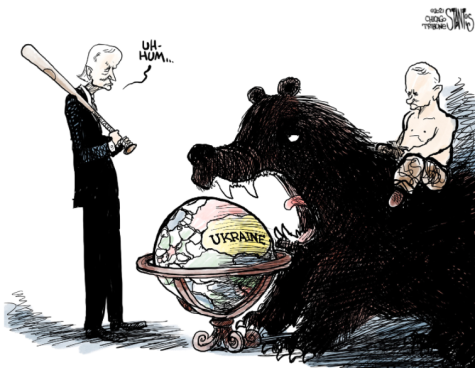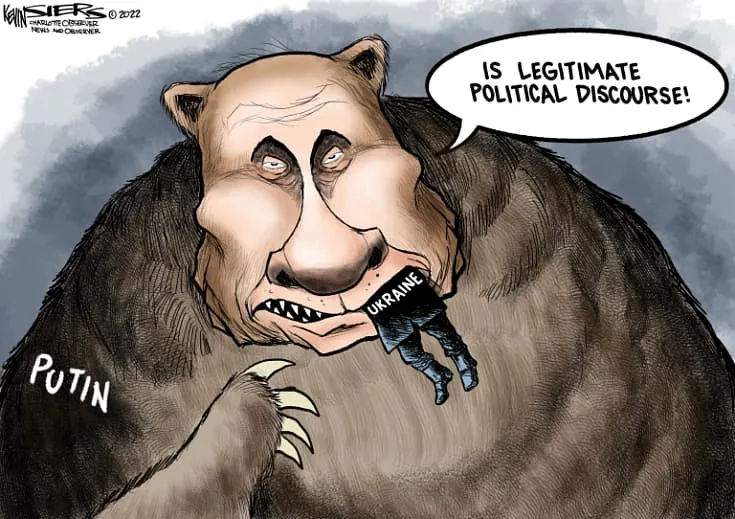Warcries and Propaganda: A Look at 1917 and 2022
On February 24, peace in Europe, intact for nearly 80 years, was shattered by Putin’s invasion of Ukraine. Over 100,000 Russian troops crossed the border into the country alongside heavy artillery and battle tanks. They were met with stalwart resistance from Ukrainian military and volunteer forces, armed with western-supplied anti-tank and anti-air missiles. Understandably so, this European war shocked the global community. For once, instead of a superpower invading a minor country with a hopeless conventional military situation (thus resulting in years of insurgent and irregular warfare) under the guise of bringing a necessary regime change, a superpower is invading a country with the direct and undisguised aim of incorporating its territories into its borders.
Nor has the worldwide response to the war been trifling. Almost immediately after the start of Putin’s invasion, economic sanctions and boycotts hit the Russian economy with a thunderclap. Sanctions have severely damaged Russian trade, frozen Russian central bank assets in other countries, and targeted Russian oligarchs regardless of their connection to the invasion. German Chancellor Olaf Scholz suspended the under-construction Nord Stream II oil pipeline running from Russia to Germany, further devastating the economy. Additionally, many major corporations, such as Shell, Samsung, Microsoft, Apple, McDonald’s, and even Facebook have either reduced or entirely suspended their operations and business in Russia. Apart from forecasted long-term effects on the Russian economy, the economic retribution has, as of March 14, brought down the value of the ruble, Russia’s currency, to .009 US Dollars. This makes less than an American penny for a single ruble.
America has not gone unscathed from its Russian entanglements – or, disentanglements, though. The war has had profound effects on the global gas market, causing American gas prices to soar, and the national average price is now the highest it’s been throughout history. But there are more side effects of the war at home, besides economic ones. A new political climate is taking shape: one not seen since the World Wars, close to a century ago. For example: take this political cartoon from 1917, the year the United States entered the First World War:

The German Empire had its foundation in the Kingdom of Prussia, which possessed world renown for its militarism and strict discipline. Here, “Prussianism” is being painted as the bane of civilized society, when in fact Germany did not even start the First World War. This cartoon, published on the front page of a Cincinnati Editorial, was accompanied by a wave of anti-German sentiment in America, which resulted in the imprisonment and persecution of thousands of German Americans who mostly had nothing to do with the German war effort overseas. Now, regard this political cartoon, published on February 5, 2022:

Russia, shown as a brutish bear with a piece of Soviet headwear is mercilessly chomping on Ukraine, shown in a civilized human form with a suit and tie. Both these pieces paint a country animalistically as well as one with ideals that the public finds threatening. In terms of messaging and theme, these two cartoons are nearly identical, although they were made 105 years apart. Now, take a look at this one:

This piece of satire featured in an article written in February 2022 in WSJ’s opinion section. Clearly, it is hinting at the ambitions of Russia and China in conquering Ukraine and Taiwan, respectively. And now, this one, from the Great War:

Look familiar? That’s Kaiser Wilhelm II of Germany, shown as an unheeding, greedy conqueror after world domination. This cartoon was also a product of President Wilson’s propaganda campaign to rile up support for the First World War after America entered into the fray in 1917. Look at this one:

And this one:

Similarities? All of these images are practically identical.
But that is not the issue. Any person could argue that the ideas in these cartoons are, to an extent, valid, or at least debatable. The issue is that we, here in America, are receiving the equivalent of what was once wartime propaganda- in a time of national peace. What makes this situation hair raising is that the last time this happened, Americans did some….questionable things. As stated before, German Americans were largely discriminated against, sometimes imprisoned for actions as minor as owning a painting of the Kaiser (never mind the First Amendment). German businesses were vandalized or boycotted, and encountering everyday racism became a reality for some individuals. Some were even mob lynched or hanged. The anti-German fervor peaked so high that even foods with traditionally Germanic names were changed. Sauerkraut became liberty cabbage and hamburgers became liberty steaks. Dachshunds were called liberty pups and German measles became liberty measles too.
Now, slowly, the same signs show themselves in front of our eyes. Restaurants in New York City bearing the word ‘Russian’ in their names like Russian Samovar or Russian Vodka Room are seeing their customer numbers drop dramatically. The restaurants have also encountered vandalism, threatening phone calls, bad online reviews, and people hurling racist slogans at them. Ironically, the owner of Russian Samovar is half-Ukrainian while the owner of Russian Vodka Room is ethnically Armenian. In March, Russian opera singer Anna Netrebko was fired from her job at the Met because she refused to publicly disavow her support for Putin, though she criticized his invasion of Ukraine. And, all around the country, Russian immigrants feel compelled to disavow and condemn the actions of a government they cannot control in the face of rising discrimination. Clothing and food companies serving Russian civilians are encountering harsh criticism and pressure to withhold their operations in Russia. For example, on March 8, the New York Post published an article highlighting, in bold print, companies that had not yet curbed their business in the country. And Russian citizens overseas are seeing the effect of sanctions on their ability to buy food and vital products, able to do nothing against Putin’s authoritarian government. In fact, the Russian government just recently arrested and imprisoned thousands of anti-war protesters in Moscow and other major cities. But this discrimination is an all too familiar story in American history. The German-Americans of World War One, the Japanese-Americans of World War Two, the Muslim-Americans of 9/11, the Chinese-Americans of COVID-19, and more. All have suffered at the hands of their own people due to the perpetuations of fear and anger.
As the old adage goes, the first casualty in war is truth. We must be careful not to let our emotions cloud our judgment and our humanity. Despite the almost wartime fervor and angst taking hold in our country, we must distinguish between the actions of the Russian government and ordinary Russian people. We must know that war is never black and white. We must uphold, perhaps for the first time in a time of trouble, the ideals of being an American; that we judge everyone, regardless of their background, only on the basis of their character.


